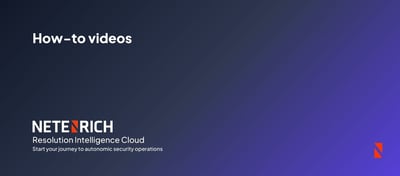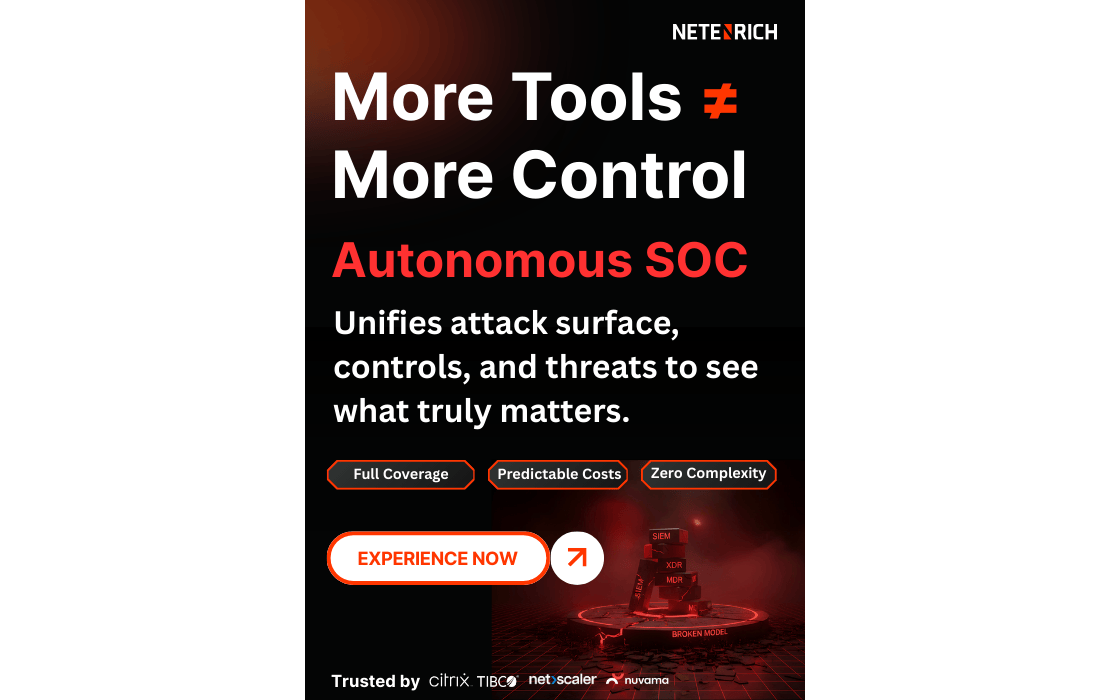What Would It Mean To “Resolve” ITOps?
Published on June 6, 2021 | Last updated on September 24, 2025 | 4 min read

As Netenrich rolls out our Resolution Intelligence Cloud™ ITOps platform, it seems appropriate to ask what exactly it would mean for enterprises to resolve digital network, security, and cloud operations. If we unleash our imagination just for a minute before getting down to brass tacks, it might look something like this…
The NOC-less NOC and SOC-less SOC emerge, and converge
Monitoring tools, automation, and AIOps started moving the industry in this direction and we have come to rely on and even take them for granted. Even so, our present reality is that, despite massive investments in machines, IT experts still need to get involved in resolving most (or at least way too many) day-to-day incidents.
In a more efficient and intelligent model, most incidents would be auto-resolved by an Ops fabric that seamlessly integrates and operationalizes machine and human decision-making.
L1 becomes L2, L2 becomes L3, and so on
As auto-resolution keeps reducing the number of Level 1 IT analysts doing basic alert and incident management, and in turn the number of tickets that still require hands-on remediation, businesses can progress and promote NOC and SOC experts. Analysts can spend less time reacting and responding, and more time predicting, preventing, and actually innovating in alignment with business goals. For the SOC in particular, the shift would spell higher analyst job satisfaction and retention and allow experts to increase their own market value without changing jobs every two years.
Tickets (and tools) go away completely?
This feels ambitious so let’s just call it a stretch goal, by why couldn’t it happen? If your Ops fabric can reduce the number of tickets being created each day—and add sufficient insights to continually resolve and prevent repeat issues – might we reduce the need to invest in point tools and ticketing systems altogether?
It’s fun to think about anyway. In the meantime, we can do the next best thing: Increase the value and benefits you get from monitoring, AIOps, ticketing, and even people. Which brings us to the present reality…
What does Ops resolution look like today?
What Resolution Intelligence does right now is pull things together to modernize ITOps and deliver better IT and business outcomes. Chances are you’ve heard something that sounds a bit like this before, so let’s get more specific.
Stop wasting 75% of the IT budget on run
It is generally accepted that most IT teams spend nearly three-quarters of the budget keeping the lights on. That doesn’t leave sufficient resources to support, much less drive mandates for digitalization.
Resolution Intelligence starts flipping the equation. If we can make your operations 40-50% more efficient—and do so quickly without IT having to buy and run more tools and systems—your experts and budget dollars could be reallocated to accelerate or scale business transformation. Moving the timelines up in turn reduces the duration for sustaining redundant deployments while shifting services to the cloud.
Solve The Tool Problem once and for all
Mid-market enterprises likely use 10 or more monitoring tools while larger enterprises may use upwards of 40 or 50. But here again, even with ongoing investments in tools, IT still learns about incidents and outages from users more than 60 percent of the time. And it still takes a minimum of 30 minutes (and an average of 2-3 hours) to investigate before experts are able to take action.
There is simply no more time for this. Even more than the cost and complexity, the disparate nature of detection and monitoring practices leads to virtually insurmountable inefficiencies. . Tools may not talk to one another, and many require specialized expertise to configure and use. There’s also a substantial “peace time” effort required to keep monitoring templates, runbooks, and standard operating procedures (SOPs) current.
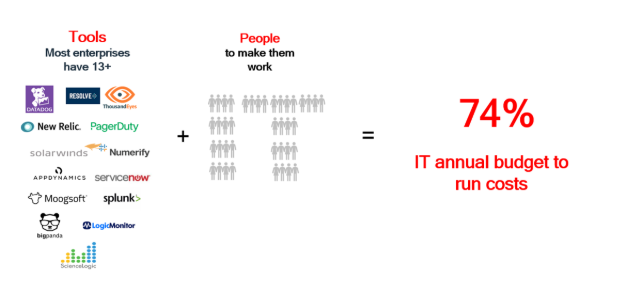
Resolution Intelligence integrates tools into a cohesive framework for end-to-end visibility, monitoring, and detection. The fabric leverages a best-in-class suite of preferred tools such as OpsRamp, Cisco ThousandEyes, AppDynamics, and others. And if you need to extend the value of existing investments, we help do that, too.
At the end of the day, our approach delivers a 360⁰ view with “zero-blindspot” monitoring that increases the frequency of IT being “first to know” to 95% or higher. The real value derives not from individual pieces but from integrating and automating tools, data sources, detection, response, and if desired, resolution itself. This introduces a powerful prospective new value proposition:
XDR for all ITOps
If you have to quote an authority on the subject, it might as well be Cisco. The industry leader defines Extended Detection and Response (XDR) as such:
Extended detection and response (XDR) delivers visibility into data across networks, clouds, endpoints, and applications while applying analytics and automation to detect, analyze, hunt, and remediate today’s and tomorrow’s threats.
This sounds pretty great, so why stop at security? Resolution Intelligence extends the basic concept behind XDR to all digital ITOps, and begins to level the silos between network, cloud, and security for the greatest possible efficiencies.
Resolution Intelligence addresses two key aspects of Cisco’s definition : “applying analytics and automation” and “remediating today’s and tomorrow’s threats.”
Insights to thrive amidst change
“Insights” covers a lot of ground:
- Context to resolve problems quickly
- Analytics to permanently resolve performance or procedural issues that trigger the same alerts, incidents, and tickets over and over
- Dashboards and reports about anything and everything
- Insight to align with the business
CIOs, CISOs, and other execs need to be able to come to one place and quickly pull metrics that guide important decisions without having to manually extract and correlate data from dozens of point tools, ITSM systems like ServiceNow, threat intelligence portals, and so on.
Resolution Intelligence transforms Ops with
Resolving for today and tomorrow
The one thing we know about the IT and Ops landscape in 2022, 2025, 2030, and beyond is that it’s sure to keep changing. So, too will IT’s role and target outcomes.
The mission for Resolution Intelligence is to create one flexible, dynamic, all-inclusive framework for automating, managing, and evolving ITOps so fast-changing outcomes continue to move in the right direction:
- Higher performance, availability, efficiency
- Greater scale and agility
- Stronger security
- Better resource utilization
- Closer IT/business alignment
- Your Goal Here
So, what exactly is it?
Short answer: Resolution Intelligence is a modern fabric that modernizes the way we think about and run IT operations to align with and transform the business.
What’s the real differentiator? Seamless, intelligent integration of machines and people—the right tools, technologies, people, and processes at any given time.
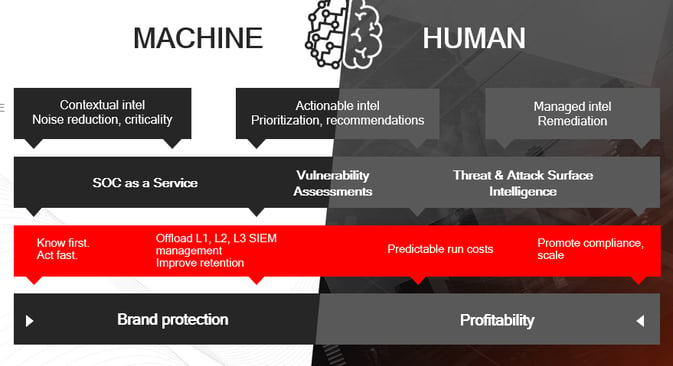
Why now?
Aside from the obvious – that the old approach won’t support the new way of doing things long-term – there are some very tactical reasons and outcomes to modernize digital Ops as quickly as possible.
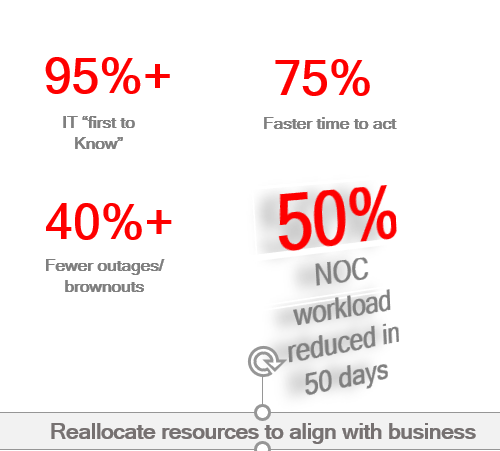
The biggest may be that Resolution Intelligence delivers Ops efficiency improvements of 50 percent or more within the first 50 days of plugging into the platform. But don’t take our word for it.
If these sample outcomes sound good, take the next step to see how, how much, and how quickly you might benefit from this new approach:
Related Articles
Subscribe for updates
The best source of information for Security, Networks, Cloud, and ITOps best practices. Join us.


